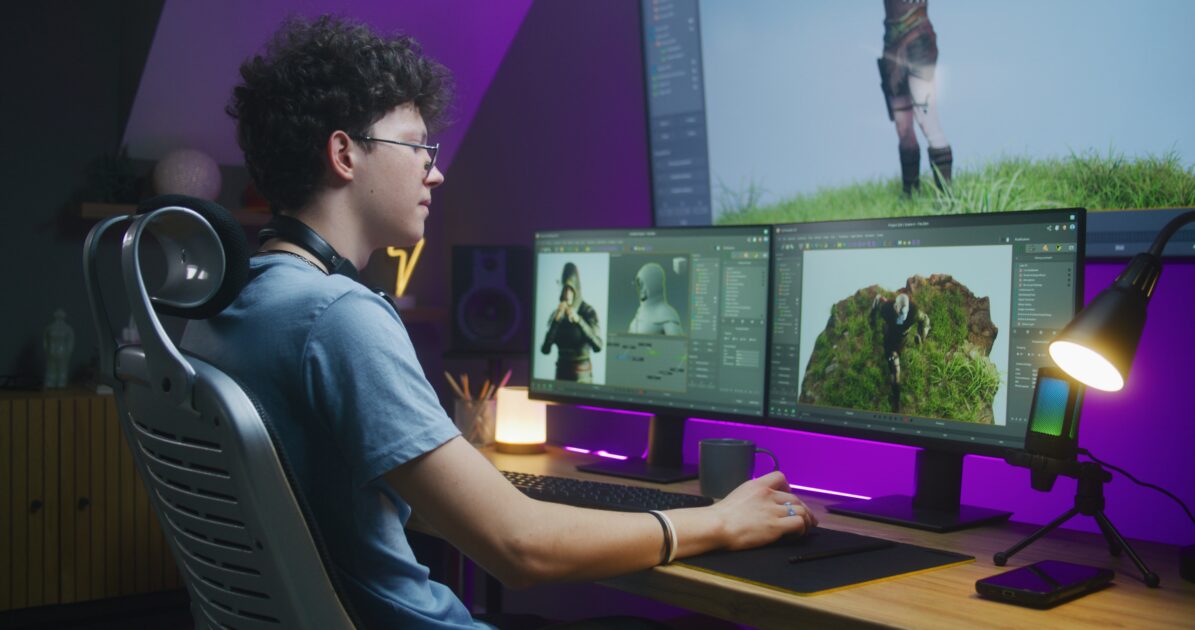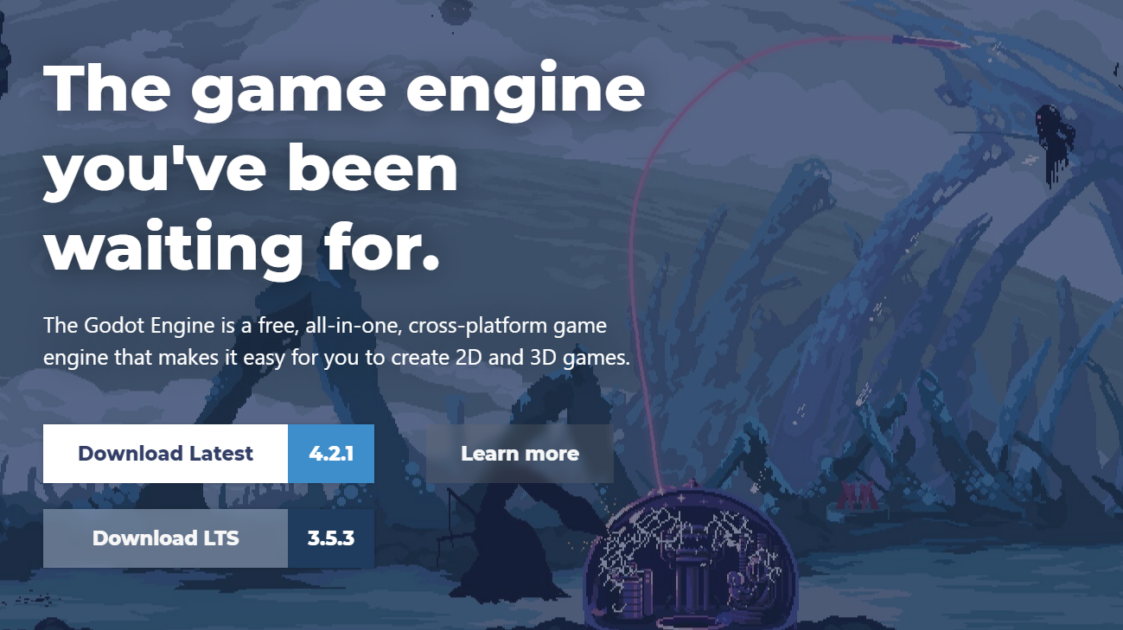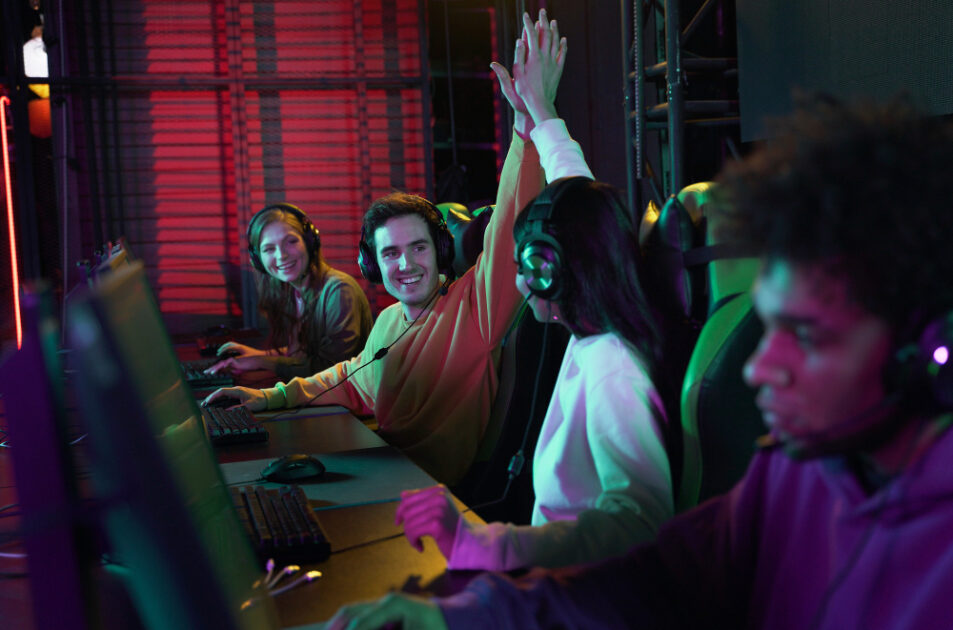As the gaming industry grows bigger than ever, there’s a lot of speculation about the game development trends that will rule the roost in 2025. With Microsoft’s biggest Activision Blizzard acquisition in 2023 and titles like Elden Ring, Vampire Survivors, and Neon White taking the world by storm, what might 2025 hold for gamers?
From state-of-the-art technologies to cloud gaming without device barriers to the integration of AR and VR, the gaming industry has a lot to offer. Now, generative AI is here to shake things up, and create more personalized experiences and dynamic NPCs. Not only that, games have transcended platforms and are moving towards a more platform-agnostic play.
All set to combine collaboration, community, and discussions, social gaming will also take the forefront in 2025. Social gaming, AR, VR, or cross-platform play have been around for years. However, they’re sure to see some big changes in the upcoming years. So, let’s see what exactly does 2025 have in store for game development trends:
Game Development Trends
Here are some of the latest trends in the game development industry that you should be aware of:
Generative AI

In 2025, Generative AI can create richer, more diverse, and intricate game worlds through procedural content generation (PCG). Not only does this reduce game development budgets and production times, but also creates a more engaging and immersive game experience for users with access to ever-evolving game worlds.
Non-playable characters (NPCs) feel rather boring, robotic, and uninteresting with their predictive behavior and limited responses. However, generative AI can revolutionize NPCs by creating unique dialogues and responses that adapt to players’ actions.
In fact, with the help of generative AI, NPCs can feel like realistic characters, thereby making your gameplay more immersive. They can learn from player interactions, form relationships, and adapt to your player style.
Generate AI can also create personalized gaming experiences—set challenges and rewards that feel valuable. Imagine a gameplay that fits according to your skills and offers a meaningful experience. Moreover, automating tasks like world-building and asset creation can help human developers to focus on creative skills. Generative AI can also identify bugs and glitches and fix them for a better gaming experience.
All in all, generative AI can make some big headlines in gaming, ones that include, but aren’t limited to:
- Creating dynamic storylines that adapt to player choices
- Generating a more interactive experience by revolutionizing NPC behaviors and actions
- Automating repetitive tasks for faster game development
- Making NPCs more believable and generating ever-evolving worlds with unique landscapes
Cross-Platform Development

Cross-platform play is all set to hit gaming devices near you in February 2024 with Mortal Kombat I.
NetherRealm Studios is all set to make history as it brings warriors from every realm together to unite across platforms and become the one true Kombatant. As the doors to crossplay open, only more can be seen coming in 2025.
Gamers like playing the same game across multiple devices, depending on which one’s available to them at the moment. As a gamer myself, I expect to see more seamless cross-platform gameplay across PCs, consoles, VR/AR headsets, and more in 2025.
Advanced cross-platform development is one of the game development trends that will dominate headlines. Cross-platform play is terrific for ensuring deeper player engagement. In fact, allowing gamers easy and seamless switching between platforms makes them keep coming back for more.
That fosters a bigger sense of commitment. You can pick up your adventure right where you left off. You’re no longer restricted by location or device access.
Moreover, classic titles, powered by seamless cross-platform gameplay, can enjoy renewed popularity once again. New titles can have better chances of success. And, platforms won’t be an obstacle in friends playing together anymore!
Cross-platform play can make the gaming industry more accessible to users by encouraging inclusivity among all players and thriving gaming communities.
Cloud Gaming

Cloud gaming hosts games on remote servers and lets gamers play even the latest AAA titles over the internet. There are no hardware requirements and local game installations that can restrict gamers.
Not only is cloud gaming a favorable option among users, but also among gaming companies. It allows them to monetize old titles and bring in new revenues. The cloud gaming industry is growing quite popular, and in 2025, it’ll reach a projection of 8.17 billion USD. Game development trends like cloud gaming will allow access to high-end titles with low-powered devices like smartphones.
Moreover, cloud servers are only meant to improve, so you can expect faster loading times and more seamless gameplay. Cloud gaming might also offer subscription models similar to Netflix and Prime Video that’ll open a vast gaming world to gamers at a low cost.
In fact, such game development trends are also great to support innovations in the gaming industry. Like, without traditional hardware at play, cloud gaming might be able to support improved gaming mechanics.
Game Engines

Unity has been the gold standard for game engines for far too long. But its recent questionable pricing policies in 2023 led game developers to explore and rely on newer alternatives like Godot. It’s completely free and quite easy to learn!
That implies game developers would seek out even more innovative game engines. Moreover, game development trends like the adoption of open-source game engines like Godot will encourage aspiring game developers and make the game industry a more accessible area.
As for Godot, we can expect the game engine to undergo some state-of-the-art improvements. Not just Godot, the rise and popularity of Unreal Engine 5 in 2023 only leaves gamers wanting for more in 2025! Unreal Engine 5 has become the game engine for VR game development. If VR rules the roost in 2025, so will Unreal Engine 5 with much-anticipated title releases like Still Wakes the Deep, Tekken 8, Avowed, Black Myth: Wukong and others.
The rise of open-source game engines will accelerate innovation in the gaming world, encourage community collaboration, and bring in a host of advances the gaming world hasn’t quite seen yet.
Indie Game Development

As open-source and user-friendly game engines become popular, the barrier for entry is lowered. Small studios and aspiring developers will enjoy easier access to develop indie games that tackle themes and genres, often overlooked by big studios.
In 2025, we can only expect more steady indie game development that bring innovative ideas to the table. With the help of cloud gaming removing hardware limitations, indie developers can now reach wider audiences and compete with big studios on a more professional level.
Moreover, indie developers can expect more success as subscription-based models and in-game advertising gets popular. Indie games are quite a necessary addition to the video game industry, with their creative passion, diversity, and fresh perspectives.
Indie games like Minecraft and Among Us have become household names. Their wide adoption worldwide has put some big studio titles to shame, just reflecting the power indie game development holds!
The explosion of online gaming activity after the pandemic also led to the rise of social games. In 2025, they show no signs of stopping. Social games refer to the online, video games available on social media networks.
It has changed how people perceive gaming. It’s no longer an activity that’s open to young people. Social gaming is open to all genders and ages, and has no device barriers. In fact, social gamers game more frequently than all other video gamers.
In 2025, we can expect the entire video gaming industry to take a page out of social gaming’s book. They can incorporate more social elements and prioritize community-based gaming to increase user engagement. In fact, the rise of social gaming in the upcoming years will greatly influence important game development trends in motion.
Meta’s first social media network, Facebook, has always led the way in social games. Remember Farmville? With Zuckerberg’s Metaverse, I believe we’ll see a seamless blend between Metaverse and social gaming.
Imagine social gaming powered by blended realities. AR overlays and VR headsets can transform our living rooms to social gaming hubs in 2025. Moreover, social gaming, combined with Metaverse, has the chance to create a shared virtual world for gamers that encourages thriving communities and player choices.
Social gaming will also encourage more subscription-based models and advanced user interfaces. These will come sooner than AI-powered social gaming that combines real worlds together.
Brands can also utilize the boon of social gaming to educate audiences, encourage brand awareness, and sell their products as meaningful solutions in-game. How brands utilize gamification will be a thing to see!
Games as a Service

Games as a service, or GaaS, is a revolutionary move in the gaming industry—it has reimagined how monetization works! Earlier, traditional games were released once, and gamers bought a copy of it, and that was it.
However, with games as a service, a game is published once and is updated regularly—with missions, events, levels, modes, and newer adventures to unlock. This encourages subscription-based models like PS plus, Xbox Game Pass, or Nintendo Switch Online.
Games as a service can improve and go beyond mere seasonable updates with the power of generative AI and procedural content generation in 2025. AI can help personalize modes and styles for gamers, ensuring continued user engagement and encouraging promising revenues for gaming studios.
However, I believe there’s one game development trend that’ll take center stage and make news before the rest. It’s how games as a service (GaaS) will incorporate cross-platform play. There’s yet another that’ll send ripples across the gaming industry by reimagining how games have been monetized or sold to date.
GaaS will continue to thrive by making games free to play in 2025. Users will be happier to purchase add-ons, in-game experiences, and purchases to create an enhanced experience, as already evidenced by the success of games like PUBG and Honor of Kings. How the game studios get their gamers to stick around will be a thing for us to see!
Immersive Storytelling

As generative AI becomes more advanced in its trails, immersive storytelling will only be on the rise with personalized game content, storylines, quests, and adventures. Linear storylines are a thing of the past—dynamic storylines with unique rewards and consequences await the gamer in 2025.
AI can also create more responsive and interactive NPCs, thereby creating a more realistic in-game experience. Imagine rich backstories and evolving relationships where more uncovers than your own storyline. However, that won’t be all!
Metaverse and VR can create blended mixed realities for a more immersive game experience. You can uncover the secrets of a century sitting in your living room, or solve crime scenes on your couch.
A look at all the advancements in technology and spatial audio can pull you deeper into immersive storylines. Get ready for haptic feedback and sensory advancements that only engage you more and make for a more meaningful experience!
Game Jams

There’s a lot of talk about collaborative games when we anticipate the game development trends that will rule 2025 and the years to come. Game jams only take that reality further!
Wondering what’s a game jam? You must have heard of a musical jam session. Imagine something similar where game devs come together, as individuals or teams, to create games from scratch!
These are now game jam competitions held in different parts of the world with winners and interesting rewards. Game jams might have originated somewhere in 2002. Two decades later, game jams with the power of the internet, social media networks, and increased gaming communities, seem to be getting only stronger and more popular.
Game jams in 2025 will encourage more global collaboration, incorporating diversity and cross-cultural themes within games. Moreover, game jams can be explored as a suitable medium to create ambitious gaming projects faster.
Game jams can also incorporate non-gamers and artists to incorporate music, animation, and other elements that encourage immersive storytelling in future games.
No-Code or Low-Code Game Development

No-code or low-code game development is the future of all software development, including games! While it’s not exactly possible to go for an entirely no-code development for games, it’s very well possible to let game engines do the legwork and focus on more creative pursuits like storylines and aesthetics for game development.
Game engines can take care of compiling code, running animations, rendering graphics, and detecting collisions. 2025 will see the rise of low-code game engines that will be more capable of handling physics or graphics or detection.
However, making an AAA title with a simple framework might be difficult for now – but something very possible in the future! Some popular low-code game development engines include Unity, Buildbox, Godot, and Construct3.
In 2025, low-code development won’t replace traditional coding. However, a blended and more efficient game development approach is underway. Low-code development will encourage more gamers to approach game development, and devs can focus on core developments leaving code work to the machines!
Low-code can also be revolutionary for the gaming industry in speeding up prototyping and game development cycles. In fact, concepts and mechanics can be tested for efficacy faster, and games won’t take so long to develop! That’s a win for consumers as well as game development studios, isn’t it?
Game Development Trends That Won’t Soar in 2025
While there has been a lot of talk about game development trends that’ll rule the roost in 2025, we also need to touch upon the ones that won’t be making the list. Blockchain gaming seems to be a thing of the past.
Possibly, with all the declined prices and instability of the cryptocurrencies, the pay-to-play blockchain games won’t be here after all! That’s unless cryptocurrency makes an even more terrific recovery in the upcoming years. Moreover, NFTs seem to have been a fad that’s fading fast from people’s memories.
With that being said, NFT collectibles and related plans for games have already been postponed or retracted from the market. What will stay on the top is hyper-casual gaming which has made a name for itself with Candy Crush and Subway Surfer. Games that require no skills to play might overtake games that require far too much dedication and time in a world where time’s scarce!


